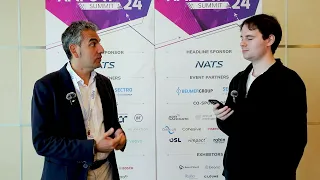Greener skies
- Like
- Digg
- Del
- Tumblr
- VKontakte
- Buffer
- Love This
- Odnoklassniki
- Meneame
- Blogger
- Amazon
- Yahoo Mail
- Gmail
- AOL
- Newsvine
- HackerNews
- Evernote
- MySpace
- Mail.ru
- Viadeo
- Line
- Comments
- Yummly
- SMS
- Viber
- Telegram
- Subscribe
- Skype
- Facebook Messenger
- Kakao
- LiveJournal
- Yammer
- Edgar
- Fintel
- Mix
- Instapaper
- Copy Link
Posted: 5 October 2011 | Eric Dautriat, Executive Director of Clean Sky | No comments yet
Clean Sky is the most ambitious aeronautical research programme ever launched in Europe. Its mission is to develop breakthrough technologies to significantly increase the environmental performances of airplanes and air transport, resulting in less noisy and more fuel efficient aircraft, hence making a key contribution to achieving the Single European Sky environmental objectives.
In this interview, Eric Dautriat, Clean Sky Executive Director, outlines the main characteristics of Clean Sky JTI, presents the perspectives beyond 2017 and shares his views on how to reach the strategic objectives of the ‘Flightpath 2050’.
Clean Sky is the most ambitious aeronautical research programme ever launched in Europe. Its mission is to develop breakthrough technologies to significantly increase the environmental performances of airplanes and air transport, resulting in less noisy and more fuel efficient aircraft, hence making a key contribution to achieving the Single European Sky environmental objectives.
In this interview, Eric Dautriat, Clean Sky Executive Director, outlines the main characteristics of Clean Sky JTI, presents the perspectives beyond 2017 and shares his views on how to reach the strategic objectives of the ‘Flightpath 2050’.
For those that are not yet familiar with it, what is Clean Sky?
The Clean Sky Joint Technology Initiative (JTI) is a programme funded both by the European Commission and the industry, officially started in 2008. It is significant that the European Union has chosen the greening of the environment as the goal of its largest aeronautical research and innovation programme ever – the European research flagship – Clean Sky. Clean Sky has the ambition to be the major contributor to the ACARE commitment of halving the CO2 emissions of the aviation sector with respect to 2000. With 1.6 billion euros of total budget up to 2017, Clean Sky is developing integrated demonstrators where technologies must be brought up to high Technology Readiness Levels (TRLs), typically TRL6. It is all about open rotors, engine and airframe composite structures, laminar wing, more electric aircraft, green trajectories, and others – and these demonstrators are progressing well.
With Clean Sky, we have been pioneering a new instrument for co-ordinating research and technology. The Joint Undertaking itself, i.e. the autonomous body of 24 staff in charge of managing the full programme and its budget, was implemented at the end of 2009. It is time now to draw the first lessons learnt, to distinguish what the major features, the major assets and also the areas of improvement of such a set-up can be.
What are then the main features of Clean Sky?
It is a public-private partnership, which means not only that the public funding, in cash, is matched by an equivalent in-kind contribution from the industry, but also that the governance is shared; strategic orientations, budgetary decisions, monitoring of the environmental objectives, procedures. Such an involvement of the industry at such a decisive stage is the best guarantee that the research performed will be, afterwards, transferred into actual innovation and result in an increased competitiveness. Through dedicated mechanisms (which should still be improved in the future) it also allows for flexibility in budget allocations and technical priorities throughout the programme.
The organisation of the JTI is tailored to the structure of the industrial sector. This organisation, through a leading role of a few major players in designing and integrating the demonstrators, allowed Clean Sky, up to now, to reach a record of 40 per cent of small and medium enterprises in the funding open to periodic calls for proposals – including a lot of new players, external to the usual supply chain or to the usual European research programmes.
Most of the aeronautical players, big and small, are participating, working together to reach common objectives, from large aircraft to regional to rotorcraft: this is the beginnings of a wider system vision, also strengthened by a technology evaluator which links all together up to fleet-level, as regards emissions forecasts.
Because it is large, collective, multi-year and at European level, Clean Sky better protects the research and technologies activities against the contingencies which usually result from the political and market priorities’ fluctuations.
The programme is defined up to 2017. But what’s beyond that horizon?
Enunciating these assets would be of limited interest if Clean Sky happened to be a one-shot exercise, to be wound up in 2017. But the definition of the future Common Strategic Framework (CSF) for the European Union research, planned for starting in 2014, has now started, with a stress on societal challenges and competitiveness, through innovation. To help defining its content for aviation, the European Commission has asked a group of high-level aviation stakeholders to provide for their vision of the future: this resulted in the ‘Flightpath 2050’ presented at the end of March. This vision, also stressing the competitiveness target, sets ambitious targets: a CO2 reduction of 75 per cent for 2050 technologies, the Year 2000 baseline, a safety figure of less than one accident per ten million flights, etc. It is further developing the system-level, global approach of the previous ACARE 2020 vision. I have no doubt that the Clean Sky experience will make such a JTI concept fully appropriate for implementing a large part of this incoming research and innovation agenda.
Could you tell us more about your vision beyond 2017 and how to get there?
The technical content of this JTI would have to be defined for a seven year period with a constant eye on the 2050 horizon. The initial definition, and its future evolutions, would take into account the Member States’ inputs and act even more than the current Clean Sky as a catalyst of the full European research in aeronautics. The global coherence agreed with the major players, would guarantee the system approach needed, by securing tight links between the research platforms (called in Clean Sky the ‘Integrated Technology Demonstrators’). The research organisations would also be at the forefront of the activities, and contribute to keep this long term vision.
This technical content definition will come when appropriate, along with the definition of the new Strategic Research Agenda. But I anticipate that it should be mostly dedicated to maximising the operational efficiency of the next generation of aircraft and their interaction with the global ATS, for the benefit of the environment, i.e. the citizen, and the passenger, while perpetuating the competitiveness of European industry.
Our first job in Clean Sky is to make the current JTI work, first of all as a provider of technological demonstrators, but also as a ‘managerial demonstrator’, but we also pave the way for the future. Then, the decision to continue such a JTI instrument and have its assets bearing fruit through necessary adaptations and with renewed objectives, will belong to the European authorities.
About the Author
Eric Dautriat has a back – ground in Engineering having graduated from Ecole Centrale de Lyon in 1977. After graduating he became an advanced projects engineer at Snecma from 1978 to 1984. Eric then joined the Centre National d’Etudes Spatiales (CNES) in 1985 and was then appointed French delegate to the Ariane Programme Board and the Scientific Programme Board of the European Space Agency from 1985 – 1988. From 1988 to 2003 he had been a member of the CNES Launchers Directorate undergoing a number of projects including leadership of the ‘Ariane 5 Solid Rocket Booster’ initiative. He has been in his current role as Executive Director of the Clean Sky Joint Undertaking, from the 15 of September 2009. He also holds a Chevalier de la Légion d’Honneur.


















